What Are the Most Common Applications of HPLC?
Introduction Ever wondered how scientists ensure your medicine is pure, or your drinking water is
Home » HPLC Inline Filter
Enhance Your HPLC System with Inline Filters
Protect your column, preserve your data, and cut costs—inline filters are essential for every HPLC setup.
Key Features:
Simple to install—critical for consistent, high-quality HPLC results.
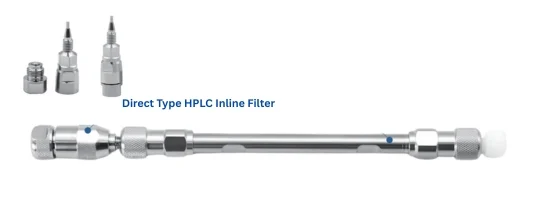


Model : P4F0B-00271
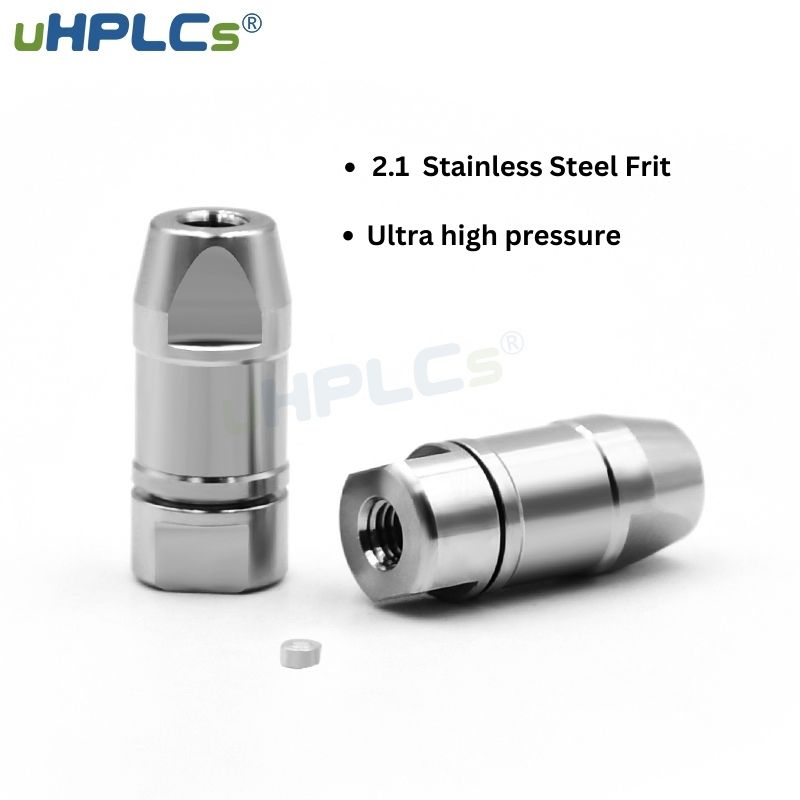
Model : P4F0B-00267
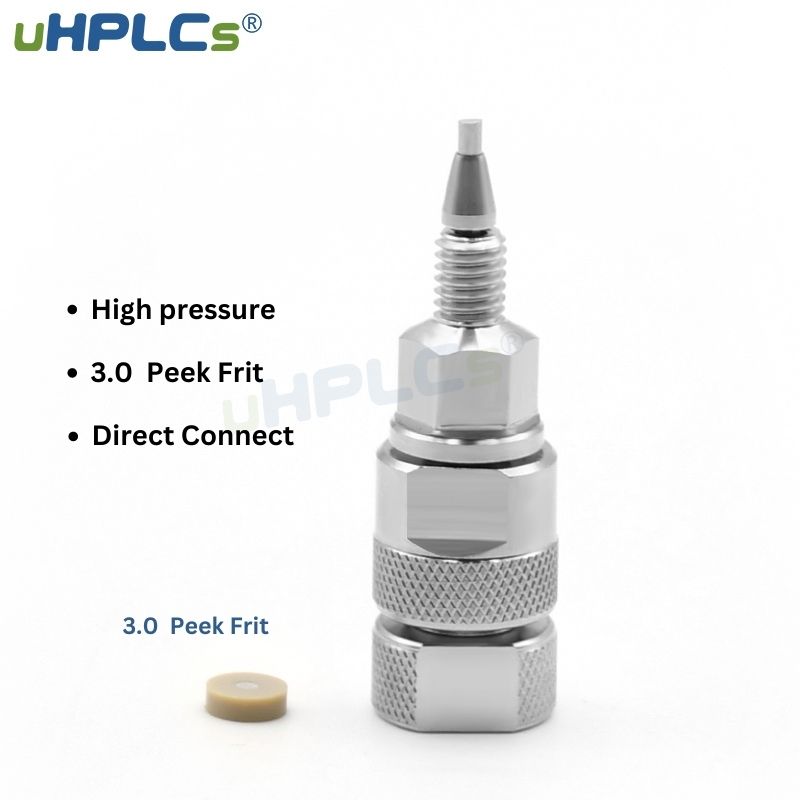
Model : HP-IF-D3.0

Model : HP-IF-ND3.0
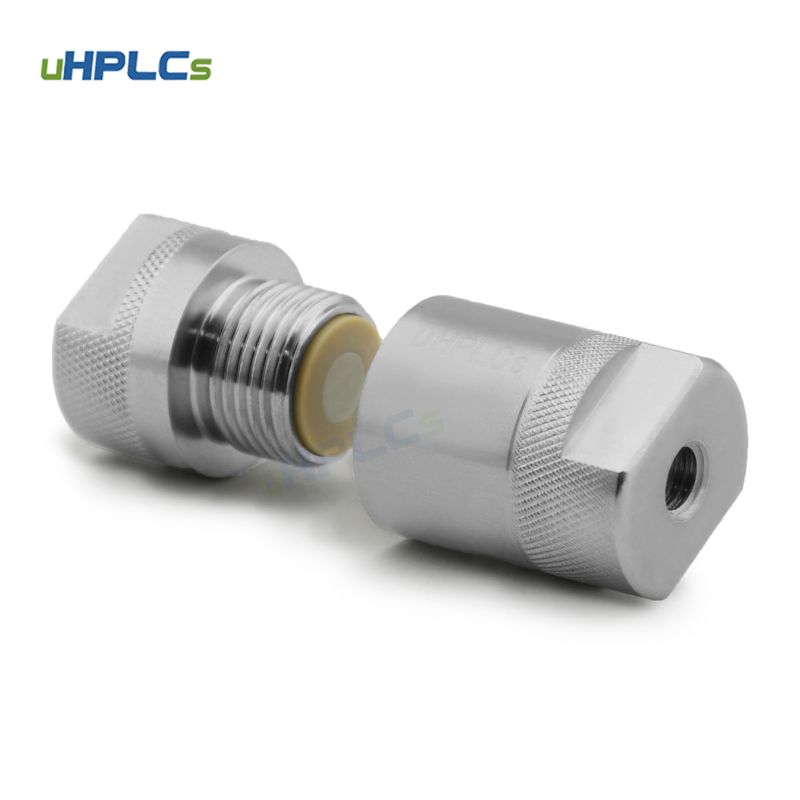
Model : HP-IF-ND4.6

Model : HPINK-H00460-1

Model : HPINK-H03000
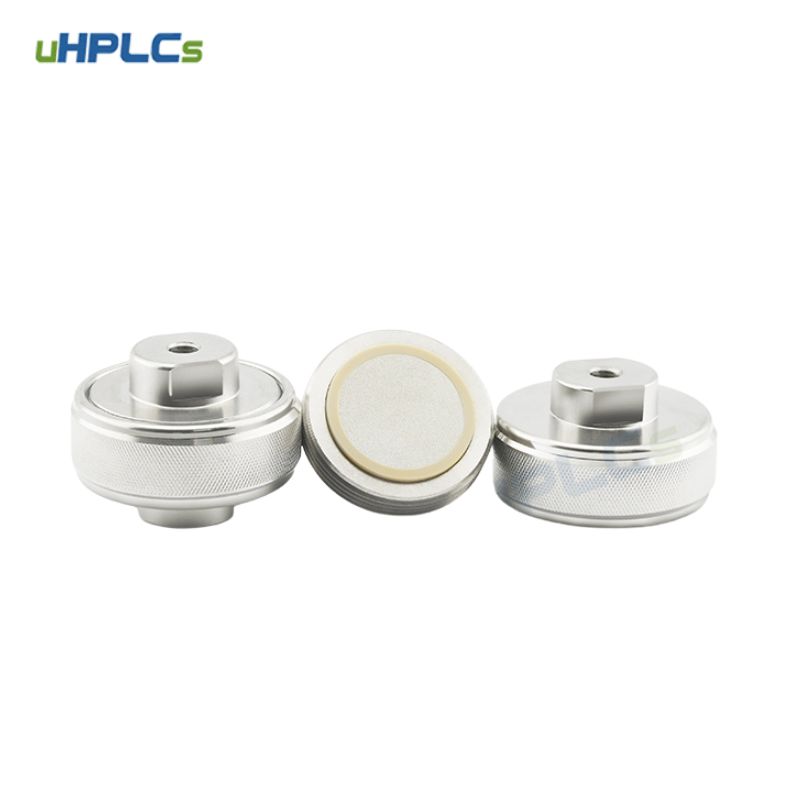
Model : HPINK-H02000

Model : HPINK-H03000

Model : HPINK-H05000
uHPLCs is a leading provider of high-performance liquid chromatography (HPLC) inline filter and an Original HPLC Column Hardware Manufacturer (OEM) supplier in the chromatography industry. With a team of experienced scientists and engineers, uHPLCs offers state-of-the-art HPLC inline columns for various applications, including quality control, research and development, and production.
uHPLCs’ inline columns are designed to deliver consistent, reliable, and reproducible results, ensuring the highest accuracy and precision in your chromatographic analysis. The columns are made from high-quality materials and are available in particle sizes and bonded phases to meet the specific needs of different applications. some key features as following:
* The design of the filters allow you to easy installation by standard fittings.
* Efficient Design Provides a cost-efficient means for protecting UHPLC systems.
* Serves as a dependable method to enhance the lifespan of the column.
* Can withstand high pressure up to 15,000 psi (1034 bar), ensuring leak-proof operation.
* Features a replaceable 0.5 µm stainless steel frit in a resilient stainless steel body.

As a professional HPLC Inline Filter OEM supplier, uHPLCs has the expertise and capability to design and manufacture custom HPLC inline columns to meet the specific requirements of your application. Whether you need a column with specific dimensions or an optimized column for a particular sample type, uHPLCs’ team will work with you to find the best solution.
uHPLCs Help to separate better, reduce system damage and improve accuracy. Order now for improved outcomes.
Main Features of 316L HPLC Inline Filter
① Made from 316L stainless steel, providing excellent resistance to corrosion and high thermal stability.
② Inline design for direct integration into HPLC system, improving efficiency and accuracy.
③ Precision-machined interior surface for smooth and uniform flow path, minimizing band broadening.
④ High-capacity packing material for improved separation and performance.
⑤ Wide compatibility with different HPLC systems, suitable for various applications.
⑥ Low back pressure, reducing potential for damage and improving flow efficiency.
⑦ Durable and long-lasting, providing consistent results and performance.
In addition to custom columns, we also offers a range of standard HPLC inline columns, including C18, C8, C4, phenyl, and heptyl, among others. These columns are optimized for many applications and compatible with most major HPLC systems and instrumentation.
we understand the importance of providing our customers with reliable and high-quality HPLC columns. That’s why we use strict quality control processes to ensure that each column is tested and validated to meet our high standards for performance and quality.
In conclusion, uHPLCs is a leading provider of HPLC inline columns and an OEM supplier that you can trust for high-quality, reliable, and cost-effective solutions for your chromatographic analysis needs. Whether you need a custom or standard column, uHPLCs is the ideal partner to help you achieve the best results.





Using an in-line filter in an HPLC system serves several important purposes:
In-line filters are used to remove particulate matter and debris from the mobile phase before it enters the HPLC system. This helps prevent clogging and damage to sensitive components, such as the pump, column, and detector.
HPLC columns can be expensive and delicate, and they are vital for accurate separations. In-line filters act as a barrier, preventing any particles or impurities from reaching and potentially damaging the column, thus extending its lifespan.
By filtering the mobile phase, the likelihood of blockages and downtime due to system issues is reduced. This leads to increased reliability and more consistent results.
In-line filters help maintain the cleanliness of the system, ensuring that the mobile phase is free from contaminants that could interfere with the detection process. This leads to better sensitivity and reproducibility of analytical results.
Particles in the mobile phase can also contaminate the detector, affecting its performance and accuracy. In-line filters help keep the detector free from debris, maintaining its optimal function.
In-line filters can reduce baseline noise in chromatograms, as they remove unwanted particulates and impurities that may contribute to fluctuations in the detector signal.
Overall, using an in-line filter is a crucial step in maintaining the integrity and performance of an HPLC system, you can easy ensuring reliable and accurate chromatographic analysis.
Finding a quality HPLC inline filter for your HPLC system is essential to ensure smooth operation and accurate results. Here are some steps to help you find the right filter:
Identify your requirements: Determine the specific requirements for your HPLC system. Consider factors such as the type of mobile phase you’ll be using (aqueous, organic, or a mixture), the flow rate of your system, and the pressure compatibility of the filter with your HPLC setup.
Filter material: Choose a filter material that is compatible with the mobile phase and sample solvent. Common materials include polytetrafluoroethylene (PTFE) and stainless steel.
Pore size: Select an appropriate pore size for the filter. The pore size should be small enough to remove particulates and impurities effectively while not causing significant pressure drop in the system.
Compatibility: Ensure that the filter is compatible with the solvent and chemicals used in your HPLC system, as well as with the column and detector materials.
Brand and reputation: Look for filters from reputable manufacturers or suppliers with a proven track record in providing quality HPLC components. Read reviews and seek recommendations from other users or colleagues.
Certifications and standards: Check if the filter meets relevant industry standards and certifications, such as ISO or CE certification, to ensure its quality and performance.
Flow rate and pressure rating: Verify that the filter can handle the flow rate and pressure range of your HPLC system. This information is usually provided by the manufacturer.
Low extractables: Opt for filters with low extractable substances, as high extractables may interfere with your sample analysis.
Compatibility with your HPLC system: Ensure that the filter is compatible with the specific model and make of your HPLC system. If unsure, consult the system’s user manual or contact the manufacturer.
Ease of use and maintenance: Choose a filter that is easy to install, replace, and maintain. Consider filters with a user-friendly design that facilitates quick and hassle-free replacements.
Pack size and cost: Evaluate the pack size and cost per filter to ensure it fits within your budget and meets your usage requirements.
Warranty and customer support: Check for warranties and the availability of customer support in case of any issues or queries related to the filter.
By following these steps, you can find a high-quality HPLC inline filter that suits your specific HPLC system and ensures reliable and efficient chromatographic analyses.

High-Performance Liquid Chromatography (HPLC) inline filters are essential for ensuring the longevity and operational efficiency of HPLC systems. They effectively protect the instrument from potential damage caused by particulate matter, prolong the life of the column, and contribute to reliable, reproducible results. Here are some key applications:
Pharmaceutical Industry: In drug development and production, HPLC inline filters are used extensively to protect the precision HPLC apparatus from particulates introduced during sample preparation. The filters play a critical role in removing impurities from the drug samples and preventing column clogging, which could result in compromised analytical accuracy and precision. This is particularly important in the process of quality control and quality assurance where accurate, reliable, and reproducible results are vital.
Food and Beverage Analysis: HPLC inline filters are crucial in the food and beverage industry where they are used in the analysis of food additives, contaminants, natural toxins, and nutrient contents. Here, they serve to protect HPLC systems from potential damage by particulates in the samples, like fibers or pulp in fruit juices or solid particulates in beverages, which could compromise the analysis results and impair the system.
Environmental Monitoring: The role of HPLC inline filters is indispensable in environmental analysis. Samples from various sources such as water, soil, and air often contain solid particulates that could damage the HPLC system. Inline filters ensure the removal of such contaminants to protect the column and maintain the integrity of the system. Furthermore, they provide consistency in the results, which is crucial for monitoring changes in the environment over time.
Clinical Diagnostics: In the healthcare sector, HPLC is often used in clinical diagnostics to quantify biomarkers, drugs, and metabolites in biological samples. HPLC inline filters are critical in ensuring these samples are devoid of solid particulates, which can damage the system and interfere with the results. Accurate results are paramount in diagnostics as they directly impact patient care.
Biochemical Analysis: Inline filters are used in biochemical analysis for the study of complex mixtures of proteins, peptides, nucleic acids, and other biomolecules. These analyses often involve complex mixtures and viscous samples that can have particulates. Inline filters remove these impurities, ensuring that the column and other sensitive parts of the HPLC system are protected from potential damage, thus maintaining the accuracy and precision of the results.
Petrochemical Industry: The petrochemical industry often utilizes HPLC for the separation and quantification of components in complex mixtures. Inline filters play a key role in protecting the HPLC system from particulates and impurities present in such samples, which could adversely affect the performance of the system and compromise the reliability of the results.
These applications underscore the crucial role HPLC inline filters play in a broad range of industries. They not only ensure the longevity and efficiency of the HPLC system but also contribute to the reliability and reproducibility of results, which are paramount in all analytical processes.
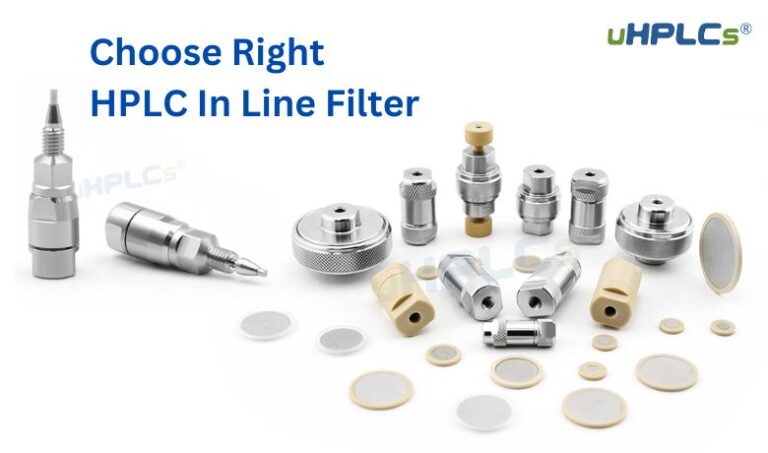
An HPLC Inline Filter is a column that is integrated into the HPLC system, allowing for a more efficient separation of sample components.
A uHPLC Inline Filter Column is a high-performance liquid chromatography inline column designed for ultra-high-pressure liquid chromatography applications.
An HPLC inline filter holder is a device used to hold and secure an inline filter within the High-Performance Liquid Chromatography (HPLC) system. The primary purpose of the inline filter holder is to ensure that the mobile phase passing through the system is free from particulates and impurities that could potentially clog or damage the sensitive components of the HPLC system, such as the pump, column, and detector.
The inline filter holder typically consists of the following components:
Body or Housing: This is the main part of the holder that encloses and protects the inline filter. It is usually made of stainless steel or another chemically compatible material.
Inlet and Outlet Ports: The inline filter holder has ports on each end to connect it within the HPLC system’s fluid path. The mobile phase enters through the inlet port, passes through the filter, and exits through the outlet port.
Filter Retaining Mechanism: The holder includes a mechanism to securely hold the inline filter in place. This can be in the form of threaded caps, compression fittings, or other types of seals.
O-rings or Seals: To ensure a leak-free connection, the inline filter holder often incorporates O-rings or other types of seals at the inlet and outlet ports.
Pressure Rating: The holder should have a pressure rating compatible with the operating pressure of the HPLC system.
Compatibility: Like the inline filter itself, the holder must be compatible with the mobile phase and the solvents used in the HPLC system.
Using an inline filter holder is essential to maintain the cleanliness of the HPLC system and protect sensitive components. It allows for easy replacement of the inline filter when necessary, ensuring reliable and consistent chromatographic results over time. The selection of the appropriate holder should be based on factors such as the type of filter being used, the flow rate and pressure of the system, and the compatibility with the HPLC setup.
Inline filter replaceable frits are components used in High-Performance Liquid Chromatography (HPLC) systems. They are designed to hold the filter media (usually a porous frit or disc) in place within an inline filter holder.
Key features and functions of inline filter replaceable frits include:
Frit Material: The frit is typically made of a porous material such as stainless steel, titanium, or PTFE (polytetrafluoroethylene). The porosity of the frit allows the mobile phase to pass through while retaining any particulates and impurities present in the fluid.
Frit Placement: The frit is positioned within the inline filter holder at a specific location to act as a barrier between the inlet and outlet ports. It acts as the filtration medium, ensuring that the mobile phase flowing through the holder is free from any unwanted particles.
Replaceability: Over time, the frit may become clogged or lose its effectiveness due to accumulated particulate matter. Being replaceable, it allows for easy maintenance and prolongs the life of the inline filter holder. When the frit becomes worn or clogged, it can be swapped out with a new one.
Filter Media Support: The replaceable frit holds the actual filter media (filter disc) in place within the holder. This ensures that the filter media remains securely fixed during operation, preventing any dislodging or misalignment.
Compatibility: The material of the frit should be chosen to be compatible with the mobile phase, sample solvents, and any chemicals used in the HPLC system. It should also have an appropriate pressure rating to withstand the operating pressure of the system.
Efficiency: Inline filter replaceable frits play a crucial role in maintaining the efficiency and performance of the HPLC system by preventing particulates from reaching sensitive components like the column or detector.
Overall, the inline filter replaceable frit is an essential component that ensures the effective filtration of the mobile phase in HPLC systems. By keeping the system clean and free from impurities, it contributes to reliable and accurate chromatographic analyses. Regularly replacing the frit helps maintain the quality and longevity of the inline filter setup in the HPLC system.
An HPLC (High-Performance Liquid Chromatography) inline filter column can improve resolution in several ways:
Removal of Particulates and Impurities: The primary function of an inline filter column is to trap and remove particulates, debris, and impurities from the mobile phase before it reaches the analytical column. These contaminants can interfere with the separation of analytes in the sample, leading to broader or merged peaks, and consequently, reduced resolution. By removing these particles, the inline filter column ensures a cleaner and more efficient chromatographic process, resulting in improved resolution.
Column Protection: Particulates and impurities can accumulate in the analytical column over time, leading to column fouling or blockages. These issues can negatively impact the column’s efficiency and separation performance, resulting in a decrease in resolution. The inline filter column acts as a protective barrier, preventing these contaminants from reaching and potentially damaging the analytical column. By extending the column’s lifespan and maintaining its performance, the inline filter column contributes to improved resolution.
Stabilization of Baseline: Impurities present in the mobile phase can contribute to baseline noise, making it difficult to distinguish peaks clearly and affecting resolution. By removing these impurities, the inline filter column helps stabilize the baseline, resulting in better peak shapes and higher resolution.
Reduced Carryover: An inline filter column can also help reduce sample carryover from previous injections. Carryover can lead to ghost peaks or overlapping signals, which can negatively impact resolution. By effectively removing residual sample components from the system, the inline filter column minimizes carryover effects, leading to better resolution in subsequent analyses.
Improved Sensitivity: By reducing background noise caused by impurities, the inline filter column enhances the system’s sensitivity. Improved sensitivity allows for better detection of low-abundance compounds, further aiding in peak separation and resolution.
It’s important to consider the appropriate pore size of the inline filter column, the compatibility with the mobile phase and analytes, and the system’s flow rate and pressure requirements to ensure optimal performance and resolution improvement.
In summary, using an HPLC inline filter column improves resolution by removing particulates and impurities, protecting the analytical column, stabilizing the baseline, reducing carryover effects, and enhancing sensitivity. These benefits collectively contribute to higher quality chromatographic separations with clearer and better-defined peaks, ultimately leading to more accurate and reliable analytical results.
GPT-3.5-turbo GPT-4 Human Written | Plagiarism Free | SEO Optimized Long-Form Article With Proper Outline [Upgraded Version]
Outputs four extremely detailed midjourney prompts for your keyword.
GPT-3.5-turbo GPT-4 GPT-4 browsing GPT-4 plugins [Version: 3.0 (Major Update)] This prompts create 100% Unique | Plagiarism Free | SEO Optimized Title, | Meta Description | Headings with Proper H1-H6 Tags | up to a 2000 Words Article with FAQ’s, and Conclusion.
Write detail YoastSEO optimized article by just putting blog title. I need 5 more upvotes so that I can create more prompts. Hit upvote(Like) button.
Write a full book with different chapters
GPT-3.5-turbo GPT-4 Write Best Smart Article Best to rank no 1 on Google by just writing Title for required Post. If you like the results then please hit like button.
Generate detailed User Personas for your Business with data neatly organized into a table.
Re-write your ai-generated article with this tool! You can get up-to 90-100% Human Generated score!
Get a beautifully organized 4-week content calendar that targets your primary keyword using only transaction longtail keyword & clickbait style post titles. Try it out!
Create captivating script ideas for your YouTube videos. Enter a short description of your video. Generates: Title, Scene, and Entire Script.
GPT-3.5-turbo Create a keyword strategy and SEO content plan from 1 [KEYWORD]
GPT-3.5-turbo Outrank the competition with an in-depth, SEO-optimized article based on [YOUR COMPETITOR URL]. Be like your competition, just a little better 😉
Using a uHPLC (Ultra High-Performance Liquid Chromatography) inline filter column offers several benefits that contribute to the efficiency, reliability, and accuracy of chromatographic analyses:
Improved System Protection: uHPLC systems operate at higher pressures and with reduced particle sizes, making them more susceptible to potential damage from particulates and impurities. The inline filter column effectively traps and removes these contaminants, safeguarding the sensitive components of the uHPLC system, such as the pump, column, and detector.
Enhanced Column Lifespan: uHPLC columns are expensive and critical for achieving high-resolution separations. Using an inline filter column helps extend the life of the column by preventing particulate build-up and reducing the risk of column blockages, thus maintaining column performance over a more extended period.
Minimized Downtime: Regular use of an inline filter column reduces the frequency of maintenance and system downtime, as it prevents the need for frequent manual cleaning or column replacements due to particle-related issues.
Consistent and Reproducible Results: By ensuring the mobile phase’s cleanliness, the inline filter column contributes to more consistent and reproducible chromatographic results, reducing variability in peak retention times and peak shapes.
Increased Sensitivity: Removal of particulates and impurities through the inline filter column results in lower baseline noise, leading to improved sensitivity for detecting trace compounds in the sample.
Efficient Sample Preparation: An inline filter column can help remove particulate matter and debris from the sample before injection into the uHPLC system, reducing the risk of sample-related issues that could affect the chromatographic separation.
Compatibility: uHPLC inline filter columns are designed to withstand high pressures and flow rates associated with uHPLC systems, ensuring their seamless integration and reliable performance within the setup.
Reduced Carryover: An inline filter column effectively prevents carryover of sample residues or contaminants from previous injections, contributing to cleaner and more accurate subsequent analyses.
Simplified Maintenance: The replaceable nature of the inline filter column makes maintenance easy and straightforward. When the filter becomes clogged or reaches its useful life, it can be quickly replaced with a new one, minimizing system downtime.
Cost-Effectiveness: While the inline filter column adds an additional component to the system, its protective benefits can lead to cost savings in the long run by extending the lifespan of critical system components and reducing the need for frequent maintenance.
In summary, using a UHPLC inline filter column provides numerous advantages that optimize the performance and longevity of the UHPLC system while enhancing the accuracy and reliability of chromatographic analyses.
Installing an HPLC inline filter holder is a relatively straightforward process. You can Check as following step and step installation guide, so you can clear to know what to do next step, Hope the list can help you to install HPLC Inline Filter to You HPLC system fast and better.
Gather Necessary Components: Make sure you have all the required components for the installation, including the inline filter holder, inline filter, replaceable frit (if applicable), O-rings or seals, and any necessary tools.
Prepare the System: Before installation, ensure that the HPLC system is turned off and depressurized. Check the user manual of your specific HPLC system for instructions on how to do this properly.
Remove Old Filter Holder (If Replacing): If you are replacing an existing inline filter holder, carefully remove the old holder from the fluidic pathway of the HPLC system. Be cautious not to damage any surrounding components or tubing.
Inspect Components: Check the inline filter holder, inline filter, and replaceable frit (if applicable) for any visible defects or damage. Verify that the O-rings or seals are in good condition and are the correct size for the ports on the holder.
Install Inline Filter into the Holder: Insert the inline filter into the holder in the correct orientation. Some holders may have markings or indicators to show the correct alignment. Ensure that the filter is securely held in place by the holder’s retaining mechanism.
Apply O-Rings or Seals: Place O-rings or seals on the inlet and outlet ports of the inline filter holder. These seals ensure a tight and leak-free connection with the rest of the HPLC system.
Insert Replaceable Frit (If Applicable): If your inline filter holder has a replaceable frit, carefully place the frit into the holder, ensuring it sits securely and evenly.
Connect the Inline Filter Holder: Carefully connect the inline filter holder into the fluidic pathway of the HPLC system. Align the inlet and outlet ports with the corresponding tubing or connections and make sure they fit snugly.
Tighten Connections: Using any appropriate tools or fittings, gently tighten the connections between the inline filter holder and the rest of the HPLC system. Avoid over-tightening to prevent damage to the components.
Check for Leaks: Once the installation is complete, perform a leak test to ensure there are no leaks at the connections. Slowly pressurize the system and visually inspect for any signs of leakage.
Flush and Prime the System: Before starting a chromatographic run, flush the system with the mobile phase to ensure that any air or bubbles are removed. Prime the system to establish a consistent flow before sample injection.
Initiate the HPLC Run: With the inline filter holder installed and the system properly primed, you can now initiate your HPLC run and start your chromatographic analysis.
Remember to consult the user manual or guidelines provided by the manufacturer of your specific inline filter holder for any model-specific instructions or considerations. Proper installation and regular maintenance of the inline filter holder are essential to ensure optimal performance and reliable results in your HPLC system.
Contact uHPLCs Today for Any Questions for HPLC / UHPLC
Introduction Ever wondered how scientists ensure your medicine is pure, or your drinking water is

Introduction Food safety is a critical priority for both manufacturers and regulators. Beyond protecting public
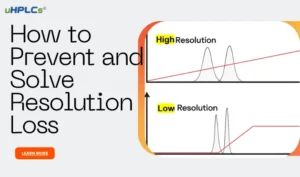
Introduction In High-Performance Liquid Chromatography (HPLC), resolution is a key factor that determines the ability
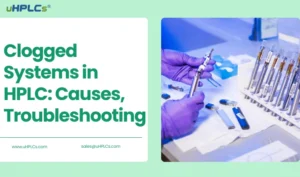
Introduction Have you ever started an HPLC run only to see the system pressure shoot
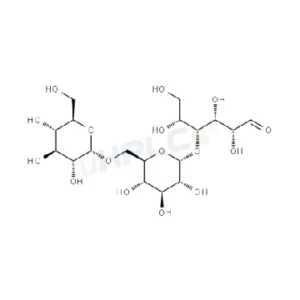
Panose Reference Standard | CAS 33401-87-5 | High-Purity Reference Material Product Code: P-C25037Z Chemical Name: Panose Category: Carbohydrate Standard CAS Number: 33401-87-5 Molecular Formula: /
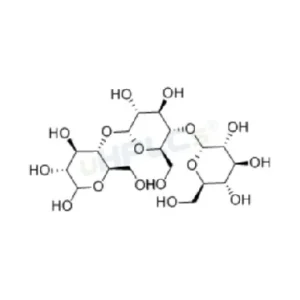
Maltotriose Reference Standard | CAS 1109-28-0 | High-Purity Reference Material Product Code: M-C25036Z Chemical Name: Maltotriose Category: Carbohydrate Standard CAS Number: 1109-28-0 Molecular Formula: /
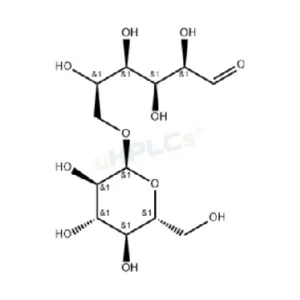
Lactulose Reference Standard | CAS 4618-18-2 | High-Purity Reference Material Product Code: L-C25034X Chemical Name: Lactulose Category: Carbohydrate Standard CAS Number: 4618-18-2 Molecular Formula: C₁₂H₂₂O₁₁
WhatsApp us
Subscribe for exclusive offers and updates on new arrivals